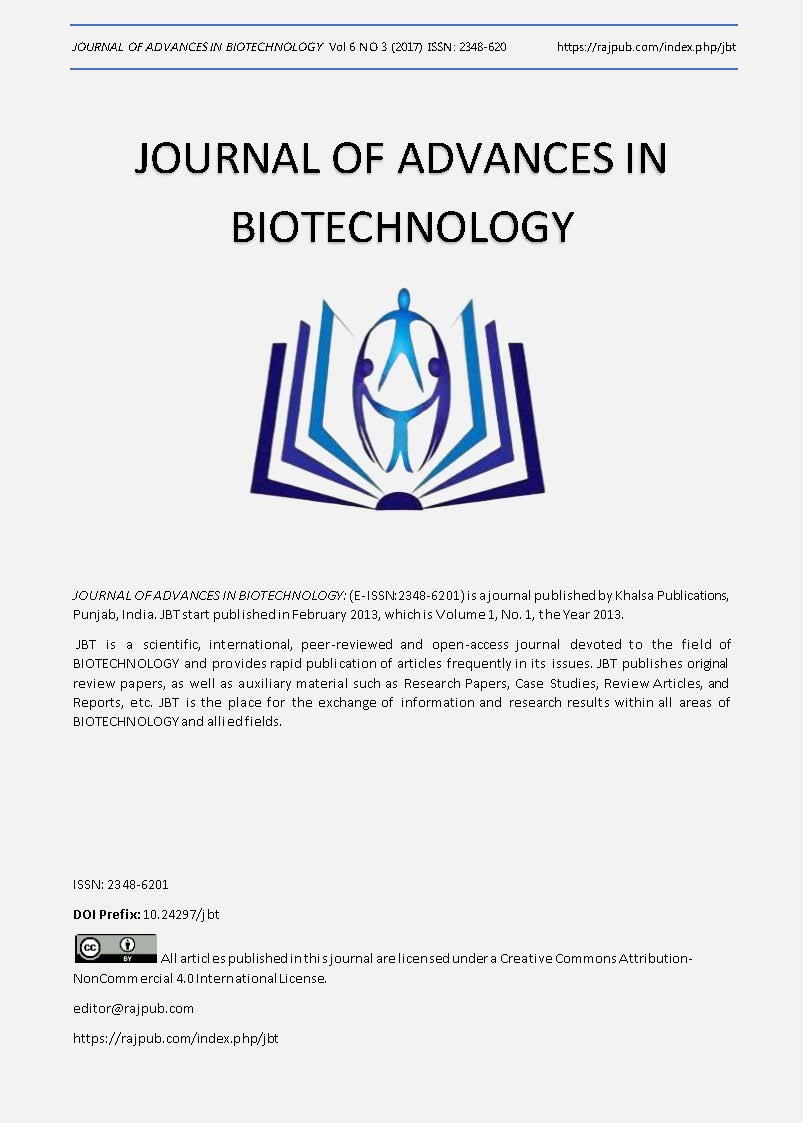BIOSYNTHESIS OF pH RESPONSIVE SHAPE MEMORY HYDROGEL AND ITS BIOMEDICAL POTENTIAL
DOI:
https://doi.org/10.24297/jbt.v6i3.6556Keywords:
Wound-Healing, Hydrogel,, Biotechnology, Biomaterials, BiocatalysisAbstract
Multifunctional hydrogels combining the capabilities of cellular pH responsiveness and shape memory, are highly promising for the realization of smart membrane filters, controlled drug released devices, and functional tissue-engineering scaffolds. Free radical biocatalytic polymerization catalyzed by immobilized Candida antarctica lipase B was used to fabricate the pH-responsive and shape memory hydrogel using medium-chain-length poly-3-hydroxyalkanoates-co-polyethylene glycol methacrylate (PHA-PEGMA) as macromer. The accelerative wound healing potential of the biosynthesized smart PHA based hydrogel was evaluated herein. The thermal stability of the macromere highly depends on the PEGMA fraction from 10 to 50% (mass). Similarly, the change in PEGMA fraction was also found to highly influence the hydrogels hydration rate (r) from 2.83 x 10-5 to 7.63 x 10-5 mL/s. The hydrogels equilibrium weight swelling ratio (qe), protein release and its diffusion coefficient (Dm) were all found to be pH dependent. For example, increasing the phosphate buffer pH from 2.4 to 13 resulted in increased qe from 2 to 16 corresponding to the enlarging of network pore size (ξ) from 150 to 586 nm.The biomedical potential of the synthesized material based on its accelerative wound healing in rats was observed. Biochemical, histomorphometric and immunohistomorphometric analyses revealed a significant difference in area closure and re-epithelialization on days 7 and 14 in PPH or Intrasite gel group compared to gum acacia or PEGMA-alone groups. Furthermore, wounds dressed with PPH or Intrasite gel showed evident collagen deposition, enhanced fibrosis and extensively organized angiogenesis on day 14 compared to the negative control group. The findings suggested that topical application of PPH accelerated the rats wound healing process by improving angiogenesis attributed to the increased microvessel density (MVD) and expressions of VEGF-A in tissue samples. Thus, PPH has been demonstrated to be effective in the treatment of cutaneous wounds in rats, and could be a potential novel agent in the management and acceleration of wound healing in humans and animals.
Downloads
Downloads
Published
How to Cite
Issue
Section
License
 All articles published in Journal of Advances in Linguistics are licensed under a Creative Commons Attribution 4.0 International License.
All articles published in Journal of Advances in Linguistics are licensed under a Creative Commons Attribution 4.0 International License.




